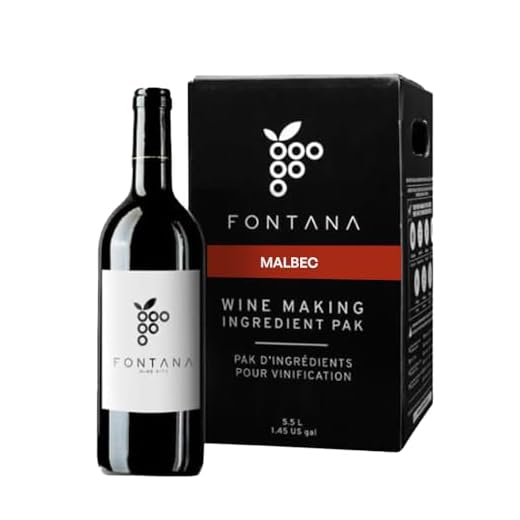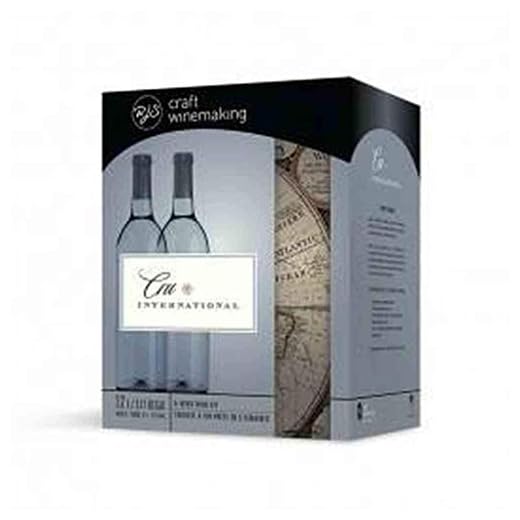



If you’re on the hunt for wines that deliver a robust experience, I recommend exploring Cabernet Sauvignon, Syrah, or Malbec. These varietals are celebrated for their intense flavors and complex aromas, often featuring notes of dark fruits, spice, and sometimes even hints of chocolate or tobacco. They provide a wonderful depth that complements hearty dishes beautifully, such as grilled meats or rich pasta sauces.
When selecting a bottle, consider the region of origin. Napa Valley Cabernets are renowned for their bold character, while French Syrahs from the Rhône Valley offer a more earthy profile. Argentine Malbecs often showcase a fruit-forward style with velvety tannins. Each offers a unique interpretation of richness that can elevate your dining experience.
Don’t shy away from experimenting with age. Many of these wines can develop beautifully over time, softening their tannins and enhancing their complexity. A well-aged bottle can reveal layers of flavor you might not expect from a younger version. Pairing these wines with the right dish can truly transform a meal into something memorable.
Understanding Robust Red Varietals
For those seeking intense flavors and a satisfying mouthfeel, I recommend exploring Cabernet Sauvignon, Syrah, and Malbec. These varietals are known for their rich character and depth.
Cabernet Sauvignon often showcases bold notes of blackcurrant and plum, complemented by tannins that provide structure. Look for bottles from Napa Valley or Bordeaux for exceptional quality.
Syrah, particularly from regions like the Rhône Valley or Australia, delivers a peppery kick along with dark fruit flavors. The complexity of this varietal pairs beautifully with grilled meats or hearty stews.
Malbec, especially from Argentina, offers a luscious profile with dark berry fruit and hints of cocoa. It’s a fantastic match for barbecued dishes or rich pasta sauces.
When selecting a robust option, consider the vintage and region, as these factors greatly influence the flavor profile. Seek out well-reviewed producers to ensure an enjoyable experience.
Pairing these wines with food enhances their characteristics. For instance, a Cabernet Sauvignon with a juicy steak or Syrah with lamb will elevate both the dish and the wine.
Experimenting with different producers and regions will lead to delightful discoveries. Enjoy the journey of exploration and find what resonates with your palate!
Characteristics of Full Bodied Red Wines
When seeking a robust wine, focus on the intensity of flavor and structure. These characteristics often stem from high levels of tannins, which provide a firm backbone, and a rich mouthfeel that coats the palate. A significant alcohol content, typically ranging from 13.5% to 15% or higher, enhances the overall weight.
Look for deep, dark fruit flavors–think blackberries, plums, and cherries–often accompanied by notes of spice, chocolate, or tobacco. Aging in oak barrels contributes additional complexity, introducing flavors like vanilla, cedar, and smoke. This interplay of fruit and oak can create a harmonious balance, elevating the tasting experience.
Pairing these wines with hearty dishes works exceptionally well. Red meats, rich sauces, and aged cheeses complement their bold nature. Consider serving them at slightly cooler than room temperature to fully appreciate the nuances.
Specific varietals, like Cabernet Sauvignon, Syrah, and Malbec, exemplify these traits, often delivering a powerful and satisfying experience. Explore different regions, as terroir can influence the character significantly, enhancing the enjoyment of each sip.
Popular Varieties of Full Bodied Red Wines
Cabernet Sauvignon stands out as a classic choice, known for its robust structure and deep flavors of dark fruits, cedar, and sometimes even green bell pepper. This variety excels in regions like Napa Valley and Bordeaux, often aging beautifully in oak barrels.
Merlot offers a softer profile with velvety tannins and notes of plum, black cherry, and chocolate. It’s widely appreciated for its approachability and versatility, making it a great partner for a variety of dishes, particularly red meats and hearty pastas.
Syrah, also known as Shiraz in Australia, delivers bold flavors of blackberry, pepper, and smoked meat, often with a hint of floral notes. This grape thrives in warmer climates, particularly in regions like the Rhône Valley and Barossa Valley.
Zinfandel is distinctive for its jammy fruit flavors and spicy characteristics. It often presents a high alcohol content and pairs wonderfully with barbecue and spicy dishes, making it a favorite at cookouts.
Malbec, primarily associated with Argentina, is celebrated for its dark fruit flavors, smooth tannins, and hints of cocoa and leather. This variety is particularly well-suited for grilled meats and rich, savory dishes.
Petite Sirah, not to be confused with Syrah, features bold tannins and intense flavors of blueberry, plum, and black pepper. It’s an excellent choice for those who enjoy a wine with a robust presence.
Tempranillo, the backbone of many Spanish reds, offers flavors of cherry, plum, and tomato with earthy undertones. It pairs beautifully with Spanish cuisine, especially dishes featuring chorizo and roasted vegetables.
Each of these varieties brings its own unique characteristics to the table, enhancing the experience of enjoying a hearty glass with the right meal. Explore and find your favorites among these celebrated options.
Food Pairing Suggestions for Full Bodied Red Wines
For a robust Cabernet Sauvignon, opt for a grilled ribeye steak seasoned with coarse salt and cracked pepper. The wine’s tannins harmonize beautifully with the meat’s richness.
Syrah thrives alongside braised lamb shanks. The gamey flavors of the lamb complement the wine’s dark fruit and peppery notes.
Pair a Malbec with smoky BBQ ribs. The wine’s fruit-forward character balances the sweetness of the sauce while enhancing the smoky elements.
For Zinfandel, serve with spicy Italian sausage pasta. The wine’s jammy profile and peppery finish elevate the dish’s flavors.
Enjoy a bold Merlot with a hearty mushroom risotto. The umami from the mushrooms pairs seamlessly with the wine’s smooth texture.
Don’t forget about dessert! A rich port goes well with dark chocolate desserts, creating a satisfying end to your meal.
For optimal enjoyment, always consider the weight and flavor intensity of your dishes. A commercial grade pressure washer can help you keep your grill clean and ready for your next culinary adventure.
How to Properly Serve Full Bodied Red Wines
The optimal temperature for these robust varieties ranges from 60°F to 65°F (15°C to 18°C). Chilling them slightly enhances their complexity and balances their tannins, making for a more enjoyable tasting experience.
Glassware Selection
Use large, tulip-shaped glasses to allow the aromas to develop fully. The wider bowl provides ample surface area for oxygen to interact with the wine, heightening its aromatic profile.
Decanting Process
Decanting is highly beneficial. Pour the wine into a decanter and let it sit for at least 30 minutes before serving. This process aerates the liquid, softening the tannins and enhancing the flavors.
| Serving Aspect | Recommendation |
|---|---|
| Temperature | 60°F to 65°F (15°C to 18°C) |
| Glass Type | Tulip-shaped, large bowl |
| Decanting Time | At least 30 minutes |
Pairing with food is essential. Rich dishes such as grilled meats, hearty stews, or strong cheeses complement the depth of these beverages. Always taste the drink alongside the meal for the best combination of flavors.
Identifying Full Bodied Red Wines in a Store
Look for bottles labeled with specific grape varieties known for their intensity, such as Cabernet Sauvignon, Syrah, or Malbec. These grapes typically produce wines with a rich texture and bold flavor profiles.
Pay attention to the wine’s alcohol content; those with higher percentages, usually above 13.5%, often indicate a fuller style. A thicker viscosity when swirling the wine in the glass can also be a sign of a robust character.
Examine the color; deeper, darker hues suggest a more concentrated wine. Additionally, check for descriptors on the label; terms like “full-bodied” or “opulent” can guide your selection.
When browsing, consider the region of origin. Wines from warmer climates, such as California or Australia, generally exhibit more richness compared to those from cooler areas.
Don’t hesitate to ask staff for recommendations. Knowledgeable employees can point you towards selections that align with your taste preferences and the desired body style.
Finally, explore the store’s selection of blends. Many winemakers combine various grapes to achieve complexity and fullness, providing excellent options for those seeking a rich experience in their glass.
Understanding Tasting Notes of Full Bodied Red Wines
To truly appreciate the complexity of these robust beverages, focus on identifying the primary flavors. Common notes include dark fruits like blackberries, plums, and black cherries. Often, hints of spices such as black pepper or clove emerge, adding depth.
Here are some key tasting characteristics to explore:
- Fruity Aromas: Look for rich, ripe fruit scents that can range from jammy to fresh.
- Oak Influence: Many of these selections are aged in oak barrels, imparting notes of vanilla, cocoa, or toast.
- Tannins: A significant presence of tannins contributes to the structure, providing a dry, astringent finish.
- Acidity: A balanced acidity enhances the wine’s liveliness, preventing it from feeling too heavy.
When tasting, take note of the wine’s mouthfeel. Notice whether it feels smooth, velvety, or perhaps grainy due to the tannins. The finish is also critical; a long, lingering aftertaste often signifies quality.
Consider this when evaluating a glass:
- Swirl the wine to aerate it, releasing its aromas.
- Take a moment to inhale deeply, identifying the bouquet.
- Sip and let the wine coat your palate; pay attention to how it evolves as it sits in your mouth.
- Reflect on the finish–does it fade quickly, or does the flavor linger?
As you explore these notes, take the time to compare different vintages and regions. Each bottle can offer a unique interpretation of the varietals. Enjoy the discovery process; there’s always something new to learn in the world of these elegant selections.
Common Misconceptions about Full Bodied Red Wines
Many believe that all robust wines must be overly tannic and harsh, but this isn’t accurate. While high tannin levels can be present, many full-flavored options are smooth and approachable, offering a delightful drinking experience.
Another common fallacy is that these wines should only be enjoyed with hearty meats. In reality, they can pair beautifully with a variety of dishes, including rich pasta and even certain vegetarian options, thanks to their complex flavor profiles.
Alcohol Content Misunderstandings
There’s a misconception that all wines boasting high intensity automatically have elevated alcohol content. While many robust selections do feature higher alcohol levels, there are numerous varieties that balance richness with a lower alcohol percentage, making them versatile choices.
Temperature Misconceptions
It’s often thought that these selections must be served at room temperature. A slight chill can enhance the fruit characteristics and soften tannins, providing a refreshing twist. Experimenting with serving temperatures can lead to delightful surprises.











